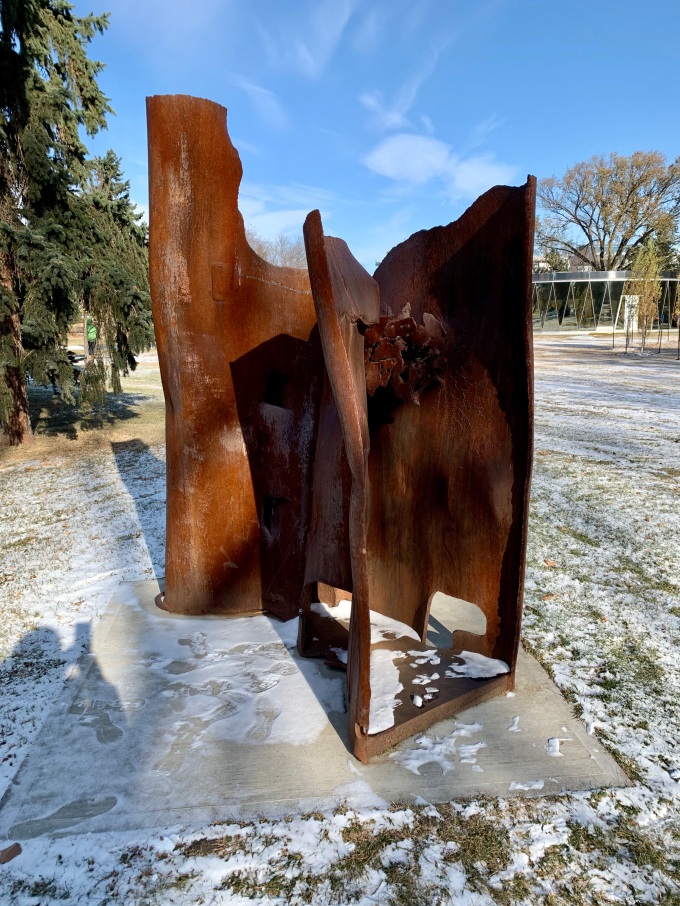As we passed this sculpture today, I asked my son to guess what it was called. He said “Berlin,” which I thought was both funny and appropriate. It turns out, the sculpture is called Living In Between and it is the work of Agnieszka Koziarz.
As we were looking at it, I read aloud the description of the piece and I couldn’t stop laughing. Agnieszka Koziarz, this is the most amusing art description I have ever read. I thank you for the unintended joy you brought.

At one time, I taught writing to art students, and one of the topics we covered was the descriptions that galleries place alongside art works. If I still taught those classes, I would definitely bring this in as an example of how not to write for the general public.
This description bears little (if any) resemblance to the sculpture, we couldn’t find the profile of a woman or the sphere anywhere, and I couldn’t wrap my head around the concept of “the walls of home, boundary, and body”. I thought perhaps there was something lost in translation. Also, having been housebound all week, I am definitely not longing for containment.
Anyway, if you want to enjoy a good laugh, read that description aloud to someone. Do it slowly, with professorial intensity as though you really get it.




Someone plugged this into a translator and did not bother to break up the sentences into bite-sized chunks. My eyes hurt.
I think so, too! Sorry I made your eyes hurt. 🙂
No worries. 🍨
I cannot believe that a teacher would be so ignorant, insensitive, and mocking about formal art made by a university masters’ graduate! It is she that needs to be schooled.
My criticism was not of the art work but of the written description, but regardless, I am sure you are right about my need for more education. Thank you for visiting the blog.
The written description uses formal art language.
Yes, and it is language that is best located where it will meet its target audience. It is not well suited to a public park.
Then you might as well say that the organization who chose and requested the artist’s work made an error. How silly that you think only uneducated people look at art in the park. Is the professional artist supposed to provide viewers with different descriptions to accommodate their particular level of education? I should think that if a viewer does not understand the academic language used in a description of an art piece, they might at least be curious about it and perhaps find out more about it.
The language the artist used is language that formal artists use.
Yes. That is my point.
So artists who are expected to use this language in an academic and professional setting should explain formalist concepts in informal language? It cannot be done without invalidating the artist, the art, and conceptual art in general. Formal art is not a story and it does not explain the meaning of the piece. That is up to the viewer. In any case, your comments were unkind. You made fun of the description and, in so doing, made fun of the artist and formalism.
Yes.
You should be ashamed of yourself. You could have made your point/opinion without ridiculing the artist.
I cannot believe that a teacher would have such an ignorant, insensitive, and mocking attitude toward formal art made by a university masters’ graduate! It is she that needs to be schooled.
You say in your blog that you had gone to ” Yorkshire Sculpture Park with works by many artists including Henry Moore and Barbara Hepworth”. Agnieszka Koziarz studied under University professor and artist, Peter Hyde, who studied under Anthony Caro, both renowned formalist English sculptors.
The viewer need only respond to the description and the piece with their senses and experience with curiosity and openness to derive meaning based on their experience. Your comments shut that process down.
Here is a link showing Peter Hide’s work: https://www.scottgallery.com/artists/peter-hide